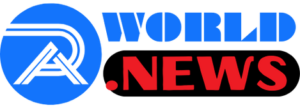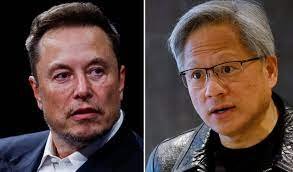During an all-hands meeting in November 2023, Nvidia CEO Jensen Huang was asked if the business will cease advertising on X due to increased antisemitism and hate speech, following Apple and Disney.
Elon Musk, the owner of X, stated earlier that month that he agreed with a post on the site accusing “Jewish communities” of spreading “hatred against whites.” Several brands, like Disney and Apple, acted promptly to suspend their advertising initiatives.
According to sources who attended the meeting but requested anonymity because they were not authorized to speak to the press, Huang’s response was tough yet polite. He stated that the chipmaker had not advertised on X in a long time and had no plans to do so. However, Huang reiterated that Nvidia would never make public statements disparaging another company.
Huang’s commentary at the time omitted any mention of Nvidia’s growing cozy relationship with Musk’s corporate enterprise.
Nvidia is seeing record demand for its graphics processing units (GPUs), as well as related hardware and services, resulting in a market capitalization that has surpassed $2 trillion. Nvidia’s offerings, including new accelerator chips, offer computational capacity for generative AI workloads, robotics, research, and data center applications.
Nvidia’s revenue increased by 265% in the most recent quarter to $22.1 billion, and last year it outsold Intel.
Musk has promised that his firms will produce advanced AI products, which will necessitate the acquisition of significant Nvidia technology.
Their amicable friendship was on display this week at Nvidia’s annual GTC conference in San Jose, California. The event, which drew over 16,000 people, including celebrities such as Ashton Kutcher and Kendrick Lamar, featured two sessions with leaders of xAI, Musk’s firm that he officially announced in July 2023.
Christian Szegedy, a co-founder and research scientist at xAI who previously worked for Google, participated in a fireside chat with Bojan Tunguz, a data scientist at Nvidia. Igor Babuschkin, another co-founder and research engineer at xAI and a veteran of OpenAI and Google, provided an outline of how Musk’s business is employing Nvidia GPUs to “accelerate training and inference of their Grok model,” referring to the startup’s AI chatbot.
In Nvidia’s press release announcing the debut of its Blackwell AI processors on Monday, Musk was cited as saying, “There is currently nothing better than NVIDIA hardware for AI.”
Musk, who helped form OpenAI before a public break with CEO Sam Altman and other founders, founded xAI to develop AI models and software solutions.
Tesla has spent years developing AI software to enable self-driving vehicles. It is also creating the Tesla Bot, sometimes known as Optimus, a humanoid robot.
While the majority of Tesla’s revenue comes from its automobile sector, Musk frequently encourages shareholders to think differently. In a January post on X, he stated, “Tesla is an AI/robotics company that appears to many to be a car company.”
Tesla first announced ambitions to develop a “Dojo supercomputer” during an AI Day presentation in August 2021. The goal of Dojo was to process and train AI models with massive volumes of video and data collected by Tesla vehicles.
‘Wow, do they want a lot more GPUs.’
Nvidia is at the forefront of its AI initiatives. Last August, former Tesla AI developer Tim Zaman said on X that a Tesla AI cluster constructed with 10,000 Nvidia H100 chips was ready to go live.
In a January post on X, Musk stated that while a Dojo supercomputer costs $500 million to build, “Tesla will spend more than that on Nvidia hardware this year.” He went on to say, “The table stakes for being competitive in AI are at least several billion dollars per year at this point.”
During Tesla’s fourth-quarter earnings call in January, an analyst asked for an update on Dojo and whether the business has a “sufficient supply of Nvidia GPUs needed for the training of the system.”
Musk stated that Tesla was “pursuing the dual path of Nvidia and Dojo,” meaning that it is developing Dojo without Nvidia’s technology but using it elsewhere. Musk described Dojo as a “long shot worth taking because the payoff could be very high.” However, it is not a very likely scenario.”
Oracle founder Larry Ellison, a personal friend of Musk, former Tesla board member, and investor in X, stated on his company’s earnings call in December that xAI had secured Nvidia GPUs through Oracle to construct the first version of Grok. However, Oracle was unable to match Musk’s expectations.
“Boy, do they want a lot more GPUs than we gave them,” Ellison went on to say. “We gave them quite a few, but they wanted more and we are in the process of getting them more.”
While Musk and Huang have a long history and are now doing more business together than ever, their relationship has not always been cordial.
Last June, Musk went so far as to brand Nvidia monopolistic in response to a post on X accusing Nvidia of “spiking the price” of its GPUs, which it could do because to a supply shortfall.
Musk stated that competitive chips were being developed and that “Nvidia will not have a monopoly on large-scale training & inference forever.”
Huang was unperturbed by the statements.
Speaking at The New York Times’ DealBook summit a few months later, Huang attributed Musk and OpenAI with the decision to construct Nvidia’s first AI supercomputer, the DGX system, beginning in 2012.
Huang stated that it took Nvidia approximately five years to design and ship the supercomputer, which he personally presented to Musk for use by OpenAI.
“Elon saw it, and he goes, ‘I want one of those’ — he told me about OpenAI,” Huang remarked on stage. “I delivered the world’s first AI supercomputer to OpenAI on that day.”
A spokeswoman for Nvidia declined to comment. Neither Tesla nor xAI responded to calls for comment.
Speaking at The New York Times’ DealBook summit a few months later, Huang attributed Musk and OpenAI with the decision to construct Nvidia’s first AI supercomputer, the DGX system, beginning in 2012.
Huang stated that it took Nvidia approximately five years to design and ship the supercomputer, which he personally presented to Musk for use by OpenAI.
“Elon saw it, and he goes, ‘I want one of those’ — he told me about OpenAI,” Huang remarked on stage. “I delivered the world’s first AI supercomputer to OpenAI on that day.”
A spokeswoman for Nvidia declined to comment. Neither Tesla nor xAI responded to calls for comment.

